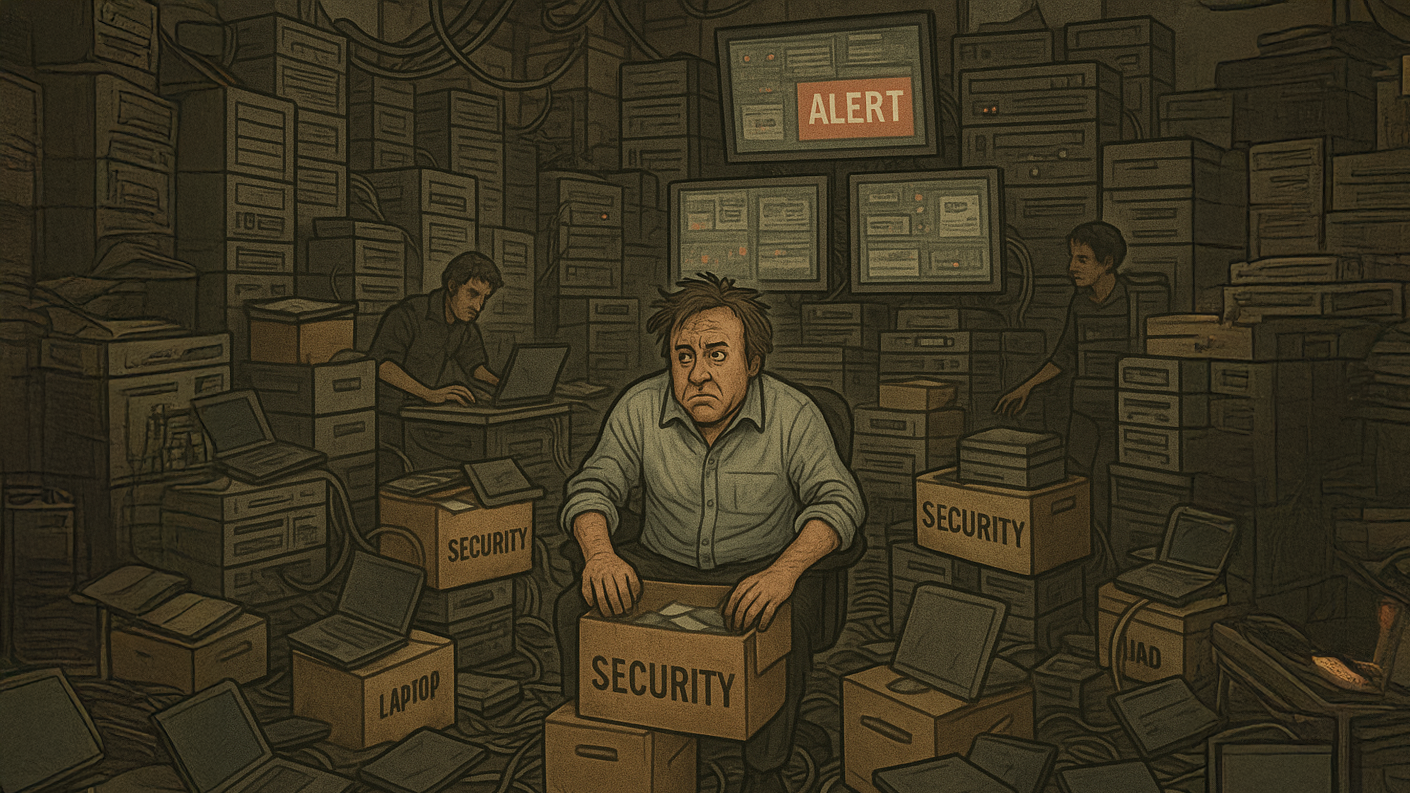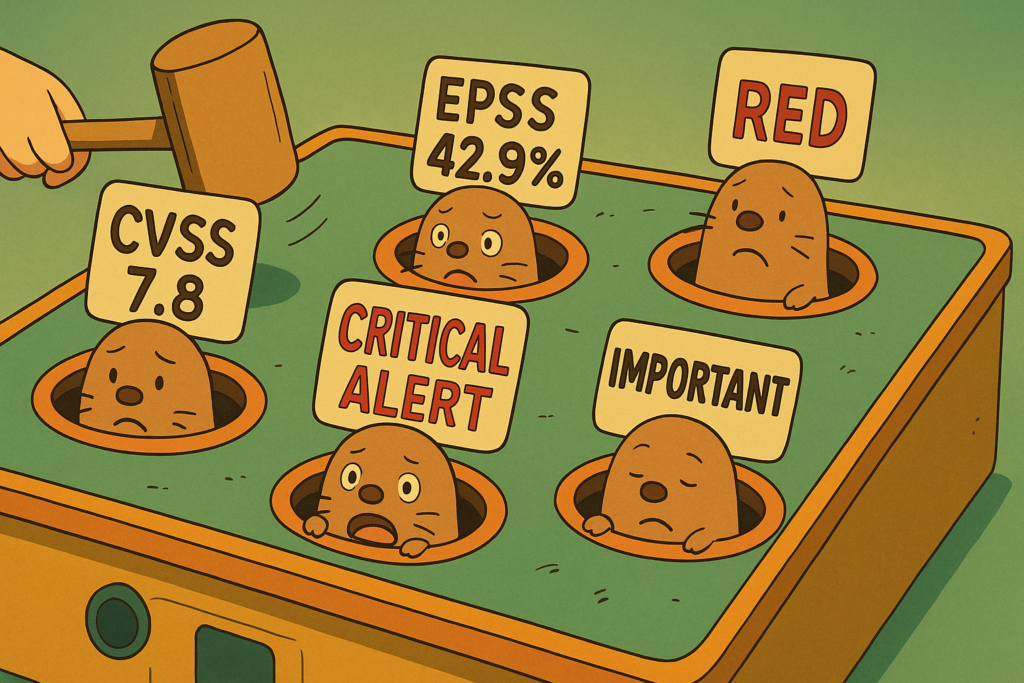Security Without Silos: Platform Consolidation and AI
Running short on time but still want to stay in the know? Well, we’ve got you covered! We’ve condensed all the key takeaways into a handy audio summary. Our AI-driven podcasts are fit for on the go. Click right here to hear it all!
Have you reached the crushing realization that your security arsenal might resemble a digital episode of “Hoarders”? Picture it: “Tonight on A&E – The CISO can’t stop buying security tools. The SOC team can barely enter the room without tripping over unused endpoint agents, and dashboards are buried under 17 layers of alerts. Will the intervention succeed, or will they buy another detection tool when no one’s looking?”

The Hoarders analogy isn’t just for laughs, rather, it’s surprisingly apt. Just like on the show where well-intentioned people accumulate items to feel safe or prepared, security teams acquire tools to address every possible threat. The impulse comes from a good place: wanting comprehensive protection. But the outcome is counterproductive. The collectors on A&E can’t find their valuables beneath the clutter, and your analysts can’t spot genuine threats amid the noise of 83 different security solutions from 29 different vendors.
And just like the professionals on Hoarders explain that clutter actually creates fire hazards and health risks rather than safety, research confirms that organizations drowning in security tools actually suffer 45% more security incidents than those with streamlined toolsets. More tools equals more problems, which makes perfect sense once you think about it. It’s like trying to protect your house by installing so many locks that you can’t remember which key goes where, and end up leaving a window open out of frustration.
Tool Sprawl: The Painful Reality
Most security teams are painfully familiar with this tool sprawl. Over time, new threats and IT initiatives led to new point solutions, and now many enterprises have a patchwork of overlapping consoles and appliances. Large organizations deploy almost 46 different monitoring tools on average, and 51% of security practitioners admit they don’t even use many of their tools fully. The result is a bloated stack that looks impressive on paper yet yields diminishing returns in practice.
Disconnected systems can’t “talk” to each other easily, leaving analysts to manually correlate data across interfaces (if they try at all). Valuable time is lost piecing together clues from siloed sources, during which an active attack may be progressing. Routine monitoring becomes a slog of logging in and out of dashboards, and critical alerts may be missed amid the noise. The human toll of this complexity is real.
When engineers must toggle between dozens of interfaces, constant context-switching drains cognitive resources and increases the chance of human error. Morale and retention suffer as talented staff burn out on “platform whack-a-mole” instead of engaging in high-value analysis.

The psychological burden of tool sprawl goes far beyond fatigue. It actually reshapes how security professionals perceive threat, agency, and responsibility. Constant context-switching between platforms induces cognitive fragmentation, where attention is split so often that deep focus becomes impossible. Over time, this erodes pattern recognition and critical thinking, which are the very skills security roles rely on. The brain learns to skim, not synthesize. When alerts flow in from dozens of tools, each with its own risk language and prioritization model, defenders begin to emotionally disengage. They stop trusting their intuition, lose faith in the tools, and eventually distrust their own judgment. This cognitive dissonance between being tasked with defending the organization and lacking the coherence to do so, breeds quiet burnout. People don’t just leave because they’re tired; they leave because they feel ineffective, confused, and unseen in the noise.
In short, more is not always better. Beyond a certain point, more tools just create more attack surface, more complexity, and more opportunities to drop the ball. Every integration point and blind spot between tools is a potential entry for attackers.
The One-Size-Fits-All Fallacy
The obvious solution seems to be consolidating with one vendor, right? Yea…well, it has its drawbacks. Security vendors love to promise the moon with their “complete” platforms, but remember when your all-in-one printer was supposed to be amazing at printing, scanning, AND faxing? How did that work out? Was it worth the cost?
A primary concern is single vendor dependence. If you consolidate too much with one provider, your organization becomes vulnerable if that vendor has an outage, suffers a breach, or discontinues a critical service. It’s like putting all your digital eggs in one basket, then giving that basket to someone else to hold.
Another reality check: no single vendor excels at everything. Security spans numerous domains including endpoint, network, identity, cloud, and application security. Vendors naturally have varying strengths. Their endpoint might be stellar, but their cloud workload protection is where dreams go to die. Relying on one platform may leave critical gaps where that vendor’s coverage is weak.
In practice, many organizations that go to a single vendor still find they must add point solutions to fill the gaps, which negates the original goal of consolidation. Over-consolidation can create a false sense of security if critical attack vectors aren’t properly covered.
Additionally, vendor lock-in stifles innovation and agility. If your entire stack lives in one ecosystem, incorporating new, cutting-edge tools becomes difficult. You become handcuffed to one supplier’s roadmap and limitations.
Lastly, a point I often make that makes people think: There’s also a psychological cost to betting on a single platform. It implies trust not just in a product, but in the collective judgment of one group of professionals. Every platform is built with the biases, constraints, and competencies of its creators. By narrowing to a single vendor, you’re implicitly accepting their worldview, meaning how they define risk, prioritize features, and interpret security. That limits exposure not just to threats, but to diverse professional insight. True resilience often comes from a plurality of perspectives, not a singular point of view.
The Smart Middle Path: Strategic Consolidation
Is the answer to tool sprawl a choice between “best-of-breed” point solutions or an integrated platform? That’s like asking if you’d rather have 50 different remote controls or one universal remote that only works half the time.

Forward-looking security leaders realize the best approach is not an either/or proposition. It’s a unified strategy that combines both. Consolidation done right doesn’t mean blindly choosing one mega-vendor. It means platform consolidation: integrating your best tools into a cohesive whole, streamlining your operations while retaining the strongest capabilities in each area.
In practice, this looks like consolidating onto a smaller set of interoperable platforms that cover broad needs (threat monitoring, vulnerability management, identity, etc.), and plugging in specialized solutions where needed. The key is to design an architecture where these tools interoperate and share data, often via open standards and APIs. In fact, 77% of security professionals want vendors to support open integration standards so that even as they consolidate, their remaining tools can “talk” to each other seamlessly.
With a platform consolidation mindset, best-of-breed and integrated are not mutually exclusive. You might use an XDR or SIEM platform as the backbone that unifies telemetry and incident response workflows, but still incorporate that one best-in-class malware sandbox or cloud security tool that outperforms the platform’s built-in module. The unified platform acts as the central hub, so you maintain a single source of truth and streamlined operations, without forfeiting capabilities.
This approach avoids the pitfalls of a single vendor monoculture. You are less dependent on any one vendor (since your ecosystem remains somewhat diverse), and you tailor the portfolio to your organization’s unique risks.
Strategic consolidation doesn’t just optimize systems, it also recalibrates the human experience of working in cybersecurity. When tools interoperate seamlessly, mental load decreases and cognitive clarity emerges. This shifts defenders out of a reactive survival mindset and into a creative, strategic one. Instead of drowning in alerts or doubting conflicting outputs, analysts regain narrative control. They can trace a threat across domains without breaking flow, building confidence in both their tools and their own judgment. This cohesion transforms posture from fragmented vigilance to informed awareness. Psychologically, it reawakens a sense of mastery: the belief that one’s skills matter, that one’s actions can make a difference. The result is not just operational efficiency, but a healthier security culture where people feel capable, purposeful, and reconnected to the mission.
Data-Driven Insight: Why Consolidation Has Become Imperative
Security executives are increasingly backing their strategy with hard data. The numbers tell a clear story about tool fragmentation and the need for consolidation:
More tools, more incidents: Having too many security tools can actually weaken security. Research found that organizations using a high number of security tools suffered an average of 15.3 security incidents per year versus 10.5 incidents for organizations with a more streamlined toolset. In other words, tool sprawl correlates with roughly 45% more security breaches, as fragmented visibility and complex workflows cause threats to slip through the cracks.
Majority of organizations prioritize consolidation: Faced with this reality, most companies are now making vendor consolidation a top priority. In one recent global survey, a full 61% of organizations reported they have begun consolidating security vendors or plan to start in the near term. Gartner noted that 75% of enterprises were actively pursuing security vendor consolidation in 2022, up from only 29% two years prior.
“Best-of-breed” adherents are now embracing consolidation: Notably, even organizations that historically championed a best-of-breed approach have come to see the value of consolidation. A recent study found 91% of security leaders operating a best-in-class multi-tool strategy now intend to consolidate vendors within the next year.
Integrated platforms improve outcomes and ROI: Consolidation is not just about reducing headache; it delivers measurable security and business benefits. Research found that companies who consolidated into an integrated security platform saw four times greater ROI on their security investments compared to those with fragmented setups. Similarly, the same study showed the platform approach sped up incident response dramatically. Consolidated organizations cut the time to identify and contain incidents by 74 and 84 days respectively on average, versus those with siloed tools.
AI: A Force Multiplier That Makes Sense
A crucial factor changing the consolidation equation today is the rise of artificial intelligence in cybersecurity. AI acts as a force multiplier for security teams, especially in a consolidated platform where it can draw on unified data.
When your security tools and data streams are integrated, AI can turbocharge detection, analysis, and response in ways that simply aren’t possible in a siloed environment:
- Better detection: Modern attackers move fast and generate subtle signals across endpoints, networks, and cloud workloads. AI is exceptional at sifting massive, diverse data for patterns and anomalies. In a unified security platform, AI algorithms can analyze telemetry across all domains together, spotting threats that would have been missed if each tool only saw its slice.
For example, machine learning models can correlate an odd log-in behavior from an identity system with a minor malware alert on an endpoint and a configuration change in the cloud, piecing together these weak signals to surface a coordinated attack early. Individually they may look innocent, but together they’re the digital equivalent of someone testing your locks, turning off your security camera, and seeing if you’re home… not exactly Girl Scout cookie sales behavior. - Enrichment and triage: AI also dramatically accelerates the analysis of alerts and incidents, essentially acting as a tireless virtual analyst to triage the deluge of security data. In a consolidated platform, when an alert triggers, AI can automatically enrich it with context from multiple sources (threat intelligence, asset criticality, historical incident data) in seconds. This reduces the manual workload on human analysts to gather information and determines significance.
Generative AI, in particular, is being used to produce narrative summaries of incidents or suggest next steps in plain language, which is like having a junior analyst draft an initial incident report and remediation plan instantly. By one estimate, leveraging security automation and AI can increase the return on security investment by 40% or more and cut data breach costs by 18% through faster, smarter responses. - Automated response: Perhaps most game-changing, AI enables a leap toward autonomous security. In a well-orchestrated, consolidated environment, AI-driven playbooks can take containment or remediation actions automatically for certain classes of incidents, at machine speed.
For example, if a device is confirmed via AI analysis to be infected with known malware, the system could automatically isolate that host from the network and initiate cleanup, all in moments and without needing to wait for human approval. This kind of auto-remediation, guided by AI confidence scores and policies set by the security team, drastically compresses the response timeline.
It’s important to note that AI works best on a unified, high-quality data set, which is another strong argument for consolidation. If your signals are scattered across 10 tools, your machine learning detections and automated actions will be less effective than if those signals reside in one ecosystem or at least are aggregated.
Strategic Takeaways for You: Security Leaders
For CISOs and other senior cybersecurity decision-makers, the message is clear: consolidation is not a compromise. It’s a path to a stronger, smarter security posture. However, how you consolidate matters.
Here are key takeaways as you consider a platform consolidation strategy:
Consolidation is a means to agility and resilience. By unifying tools and breaking down silos, you enable your organization to respond faster and more coherently to threats. Integrated platforms eliminate the delays and disconnects of a fragmented stack, giving you efficiency, speed, and scale. Organizations that adopted a platform-based security approach operate security teams that are 34% more efficient, and they lowered security costs by 10% on average.
Consolidation doesn’t mean settling for less. Modern security platforms and frameworks allow you to unify without sacrificing quality. The goal is to integrate best-of-breed capabilities into a cohesive whole. This might involve choosing a primary security platform that covers a lot of bases and has an open integration architecture, and then folding your specialized tools into it. The end state should retain the strengths of each component tool while removing the friction between them.
Leverage AI and automation as force multipliers. When consolidating, make sure to incorporate AI-driven capabilities to get the maximum benefit from your unified data and workflows. Artificial intelligence can dramatically improve threat signal-to-noise ratio and automate routine tasks, but it needs access to rich, correlated data, exactly what a consolidated platform provides. These force multipliers will help your lean team do the work of a much larger team.
Consolidation is an investment in long-term security maturity. In the short run, it requires planning, change management, and possibly up-front costs to transition. But the long-term returns are significant: improved risk visibility, faster response, lower maintenance burden, and often direct cost savings from tool license consolidation. Studies have shown consolidation can yield 4x ROI and demonstrably reduce breach impacts. More importantly, it positions your security program to scale with the business.
Summing it up for you: Senior security leaders should view strategic consolidation as a way to turn cybersecurity into an enabler of the business. By reducing complexity and integrating defenses, you not only close security gaps but also gain speed and insight, which translates to confidence to pursue digital transformation initiatives.
Far from being a risky gamble, consolidation done thoughtfully is a sound investment in building an agile, resilient, and smart cybersecurity organization. It’s about doing more with less and being prepared for whatever comes next. Because let’s face it…managing 83 security tools is like that moment on Hoarders when someone insists their 47 broken toasters are “all necessary for different purposes.” The cleanup specialist always gives that look that says, “Sure, Jan.”



